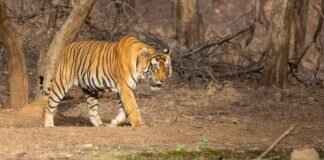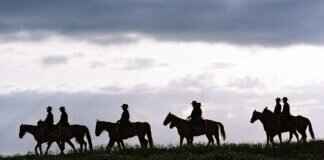Mysuru, a city known for its tourism appeal and rich wildlife, has been grappling with a unique challenge of coexisting with leopards. Situated close to prominent tiger reserves and elephant sanctuaries, such as Bandipur and Nagarahole, Mysuru has always had a strong connection to nature. However, in recent times, the city has been in the limelight due to a surge in leopard sightings within its urban and industrial areas.
Leopards have long been a part of Mysuru’s landscape, but with rapid urbanization encroaching upon their natural habitats, encounters between these majestic creatures and residents have become more frequent. The unchecked horizontal sprawl of the city has led to a growing conflict between humans and leopards, drawing attention to the presence of these spotted big cats that have always been a part of the region.
In recent months, two high-profile incidents highlighted this coexistence challenge. A leopard made its way into the 350-acre campus of Infosys, prompting employees to work from home while the Forest Department launched a month-long search operation. Another leopard ventured near the Reserve Bank of India’s currency note printing unit, eventually being captured after persistent efforts. These incidents underscored the need for better management of human-leopard interactions in urban areas.
Human Intrusion and Conflict
The presence of wildlife in industrial areas like Metagalli, Hootagalli, and Belawadi can be attributed to the encroachment of human settlements into leopard territories. The development of these regions from villages surrounded by scrub vegetation to industrial layouts has disrupted the natural habitats of leopards, leading to heightened conflict situations. The incidents of leopards being captured from industrial areas, tourist destinations like Brindavan Gardens, and residential localities highlight the need for proactive measures to address this issue.
Adapting to Changing Environments
Despite the challenges posed by urbanization, leopards have shown remarkable adaptability to the changing landscape of Mysuru. The presence of scrub forests, agricultural fields, and wilderness areas beyond the city limits has provided crucial connectivity for leopard movement and dispersal. Chamundi Hills, a designated reserve forest within the city, serves as a green oasis that supports a diverse range of wildlife, including leopards. Experts emphasize that unlike tigers, leopards are highly adaptable and can thrive in diverse environments, from dense forests to semi-urban areas.
The proliferation of CCTV surveillance cameras and social media platforms has played a role in detecting leopard movements and raising awareness about human-wildlife interactions. However, it is essential to understand that leopards have coexisted with humans for centuries, silently navigating the fringes of urban areas. The Forest Department’s Leopard Task Force has been actively responding to leopard sightings and implementing strategies to mitigate conflicts, emphasizing the importance of educating the public about leopard behavior and conservation.
A Sustainable Approach to Coexistence
While the capture and relocation of leopards in conflict situations remain a common practice, there is a growing recognition of the need for long-term solutions. Proposals to create enclosures or sanctuaries for captured leopards raise ethical concerns about confining these wild animals. Experts advocate for habitat conservation, wildlife corridor protection, and conflict mitigation strategies as sustainable alternatives to ensure the peaceful coexistence of humans and leopards.
By safeguarding the wilderness of Mysuru through scientific landscape management and community involvement, we can create a harmonious environment where both humans and leopards thrive. Embracing a proactive approach that focuses on habitat protection, prey management, and conflict prevention will pave the way for a sustainable future where wildlife and urban residents coexist in harmony. Let’s strive to build a world where the roar of a leopard is a symbol of nature’s resilience and our commitment to preserving biodiversity.














